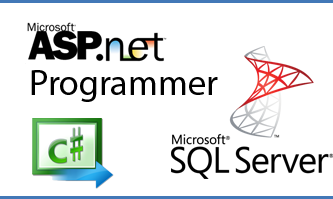.NET…..AN INTRODUCTION
.NET is the application based framework, which exists between the application programs and operating system. The .NET based application are run and controlled within the .NET framework. .NET is highly supportive for both Windows and web applications. It creates an object based environment, by ensuring safe code execution through required runtime validations. This kind of validation robust the web environment. .NET comprises of two major components including, the Common Language Runtime (CLR) and .NET class library. CLR helps in providing essential services like memory and thread management. Programs run by CLR do not require memory management, as this task is taken care of by the CLR itself. The code managed under CLR is known as Managed code.

In .NET class library there are about 5000 classes to perform several operations. The class library covers several Data Structures, Database access, the IO management, Web Controls and Window , plus Multi-threading, and finally the Remoting and Reflections.
The library is the most amazing part of .NET as it includes all languages, thus making it similar to C# in accessing the VB.NET files. The once learnt library techniques can be used for any language. Number of applications need .NET class library. Some of the important ones in the list include:
- Console applications.
- Windows GUI applications.
- ASP.NET applications – web applications.
- XML Web services.
- Windows services.
The shift of language from COBOL to C and then from C to VB, have made the understanding of common operations three times easier.
.NET….. THE FOUR FEATURES
Besides having the various components, what makes .NET a dynamic language in programming is actually the four features. The four features are as follows:
- Assembly: The .DLL or .EXE is the assembly that creates the portion of the application. It has a MSIL code which CLR executes. The permissions are granted on this assembly unit, who has a version. The assemblies comprise of interfaces, classes, and different resources such as bitmaps. The assembly consists of Meta data which is the information storehouse of the assembly. This information is further used by CLR which makes use of this info while executing the assembly. The assemblies are either private, which are in the hands of those who own the application or they might be Global which can be used by any application in the system. Two different version assemblies having same name can be run parallel thus providing the applications to make use of the specific version of the assembly. The assembly has four different parts:
- Assembly Manifest includes the name, version, culture, and information of the assemblies referenced to.
- Type metadata has the necessary information about the various types that are defined within the assembly.
- MSIL refers to the code run as MSIL code.
- Resources are the BMP or JPG files or even files other than these which the applications require. An assembly with only resources is referred as Satellite assembly.
- Common Type System or CTS is concerned with data types needed by the language to follow. Similar to the programs which can be converted to MSIL, the various data types of the languages are also convertible into certain data types, which are a standard one. CTS creates the world if rules to be followed by the language. It is a portion of the criss language integration which permits the languages in one class yo be used for others after extension.
- Cross language interoperability: .NET is highly supportive for the language interoperability. This does not mean that every program in one language can be used in another. To enable the program in such a way that it may accompany other languages, it is necessary to create a set of rules to be followed. This is called Cross Language Specifications (CLS).
- Cross language exception It is the ability to create a class in C# from the one established in VB.NET. When an exception is raised by any of the C# written programs, it is handled by VB.NET and is known as cross-language exception handling.
The dynamic world of .NET
It is due to these features that .NET has become a dynamic language to establish the several applications including
- Windows applications
- Web applications
- Web services
- Console Applications
- Mobile Applications
Conclusion:
With changing times new features have been introduced to .NET. It is necessary to understand them by every programmer who works on all sorts of Window based applications. No programmer can ignore .NET. It is a great platform for all programmers. It is not a unique OS given by Microsoft but still is unique due to its specialized features has brought a set of new features which are to be understood by every programmer developing applications for Windows. Although it supports many different languages but the two dominant languages are VB.NET and C#. VB.NET follows the VB 6.0 and has become OOPL after modifications.
